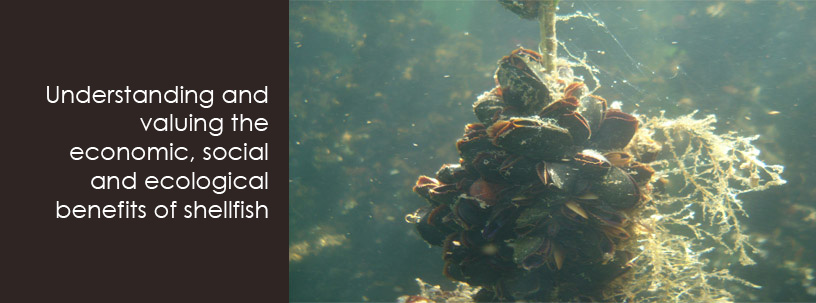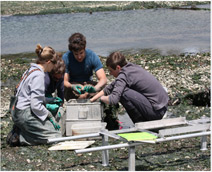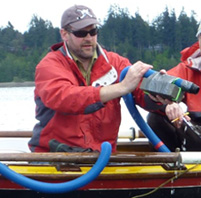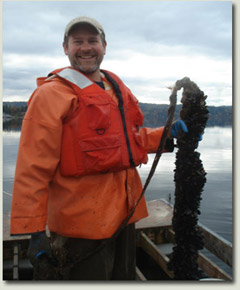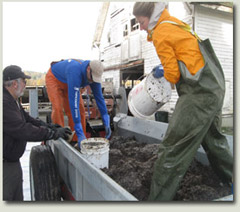ECOLOGICAL INTERACTIONS
Valuing Ecosystem Services
PSI research and outreach seeks to better understand and communicate the ecosystem services and economic and cultural value of shellfish. Shellfish are integral components of the coastal ecosystem. As ecosystem engineers, shellfish create conditions for other plant and animal species to thrive and they provide valuable ecosystem services to humans. Ecosystem services- the benefits people obtain from ecosystems- can be grouped into four broad categories of services: provisioning, regulating, habitat (formerly termed "supporting", and cultural services. Shellfish have been identified as providing:

Through a partnership with Northern Economics Inc., PSI contracted the report Valuation of Ecosystem Services from Shellfish Restoration, Enhancement and Management: A Review of the Literature. The document compiles literature related to the ecosystem services of shellfish, and describes economic methods that have been applied to value those services.
Shellfish and Nutrient Mitigation
Shellfish consume nitrogen and phosphorus-containing plankton and detritus, playing an integral role in nutrient cycling of coastal habitats. In marine environments nitrogen is most often the limiting nutrient in phytoplankton productivity, and- although somewhat counterintuitive- over-productive phytoplankton activity causes dissolved oxygen depletion. Low dissolved oxygen conditions (termed "eutrophic," low oxygen, or "hypoxic," no oxygen) result when excessive plankton blooms and eventually decays. (The decay process consumes oxygen in the water column.) By harvesting plankton-consuming shellfish, nitrogen and other elements are removed from the water column. Although more difficult to quantify, shellfish also contribute to nutrient cycling through biogeochemical processes, including production of feces and 'pesudofeces' incorporated in the water column through resuspension or burial in sediment.
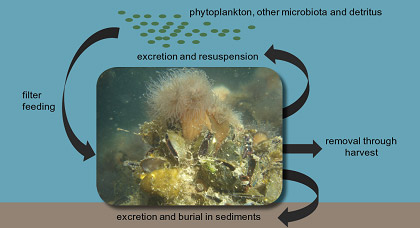
Recent PSI research examined the potential of nitrogen removal through shellfish harvest and then quantified those services for Puget Sound. A low-end estimate shows Puget Sound commercial shellfish aquaculture removes 62 metric tons of nitrogen per year. Also see the NOAA Fact Sheet: Aquaculture Provides Beneficial Ecosystem Services
ECONOMIC IMPACTS
West Coast Shellfish Production
Nutrient removal services of shellfish can also be valued though 'replacement cost method', using the cost of traditional waste water treatment processes to remove equivalent nutrients. Estimates result in a range of values, depending on the life-cycle cost of the removal technologies employed at local waste water treatment facilities. A rescent PSI led study found that nitrogen removed through Oakland Bay (south Puget Sound) shellfish harvest is valued at $3-$25 per pound of nitrogen removed, which was valued as a $77,100- $650,863 annual water quality benefit.
In addition to water quality benefits, shellfish aquaculture also provides jobs and revenue for coastal communities. A recent PSI study of the economic contributions of shellfish aquaculture found that the West Coast (AK, WA, OR, and CA) industry generates $228M in revenue each year and provides 3,800 jobs. Using an Input/Output model, PSI and partners at Northern Economics, Inc. also found that each $1.00 spent by the industry generates $1.67 in additional spending in the region.
|
|
|






